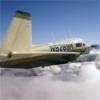My latest adventure, or my $3000 hamburger run, or new ways your engine can fail you.
-
Members Online
- 65MooneyPilot
- LANCECASPER
- gabez
- ta2too
- TCC
- Amelia
- buddy
- Thedude
- eman1200
- TaildraggerPilot
- testwest
- RightrudderM20E
- suzortman
- Guy123
- Wingover
- 201er
- Sabremech
- mooneyflyfast
- CCAS
- takair
- slowflyin
- 00-Negative
- Scottknoll
- INA201
- ttflyer
- MoonFlyer68
- Scott Ashton
- DXB
- Aaviationist
- Jake@BevanAviation
- gwav8or
- GeeBee


Recommended Posts
Join the conversation
You can post now and register later. If you have an account, sign in now to post with your account.